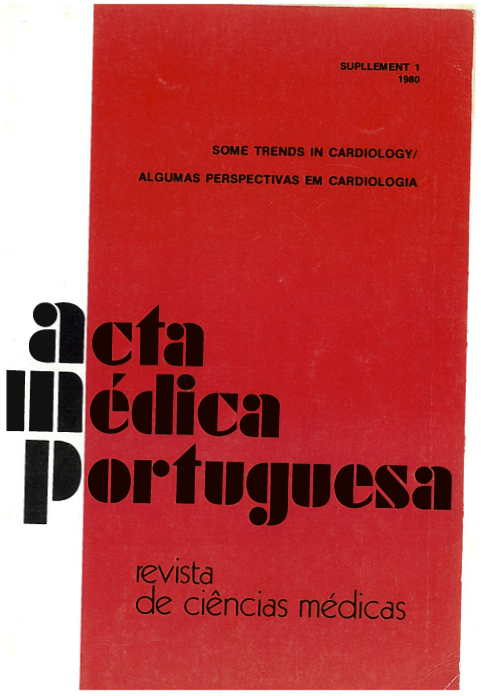Valve substitutes in cardiac surgery.
DOI:
https://doi.org/10.20344/amp.4281Abstract
SUBSTITUTOS VALVULARES EM CIRURGIA CARDIACA
Após urna breve história da evolução da Substituição Valvular em Cirurgia Cardíaca, descrevem-se, em primeiro lugar, os vários tipos de válvulas mecânicas cuja utilização se iniciou em 1960. Estabelecem-se as diferenças entre os vários modelos fazendo-se referência mais detalhada as próteses com oclusor de bola e, especialmente, aquelas em que o oclusor é de disco basculante. Relaciona-se o fluxo e a turbulência com as complicações observadas neste tipo de válvulas em que a anticoagulação e obrigatória. Em seguida descrevem-se as válvulas biológicas que também passaram por diversas fases de progresso, principalmente relacionadas com a preservação do tecido utilizado. A maior parte das actuais biopróteses é construída com válvulas aórticas de porco mas também, numa delas, se utiliza o pericárdio de vitela. Realça-se o papel do glutaraldeido como meio estabilizador a que se deve o progresso e durabilidade das biopróteses em que os anticoagulantes são habitualmente dispensados. Finalmente menciona-se a estatística do Serviço de Cirurgia Cardiotorácica dos Hospitais Civis de Lisboa estabelecendo-se as razões da preferência pelo tipo de válvulas mais frequentemente usado.
Downloads
Downloads
How to Cite
Issue
Section
License
All the articles published in the AMP are open access and comply with the requirements of funding agencies or academic institutions. The AMP is governed by the terms of the Creative Commons ‘Attribution – Non-Commercial Use - (CC-BY-NC)’ license, regarding the use by third parties.
It is the author’s responsibility to obtain approval for the reproduction of figures, tables, etc. from other publications.
Upon acceptance of an article for publication, the authors will be asked to complete the ICMJE “Copyright Liability and Copyright Sharing Statement “(http://www.actamedicaportuguesa.com/info/AMP-NormasPublicacao.pdf) and the “Declaration of Potential Conflicts of Interest” (http:// www.icmje.org/conflicts-of-interest). An e-mail will be sent to the corresponding author to acknowledge receipt of the manuscript.
After publication, the authors are authorised to make their articles available in repositories of their institutions of origin, as long as they always mention where they were published and according to the Creative Commons license.









